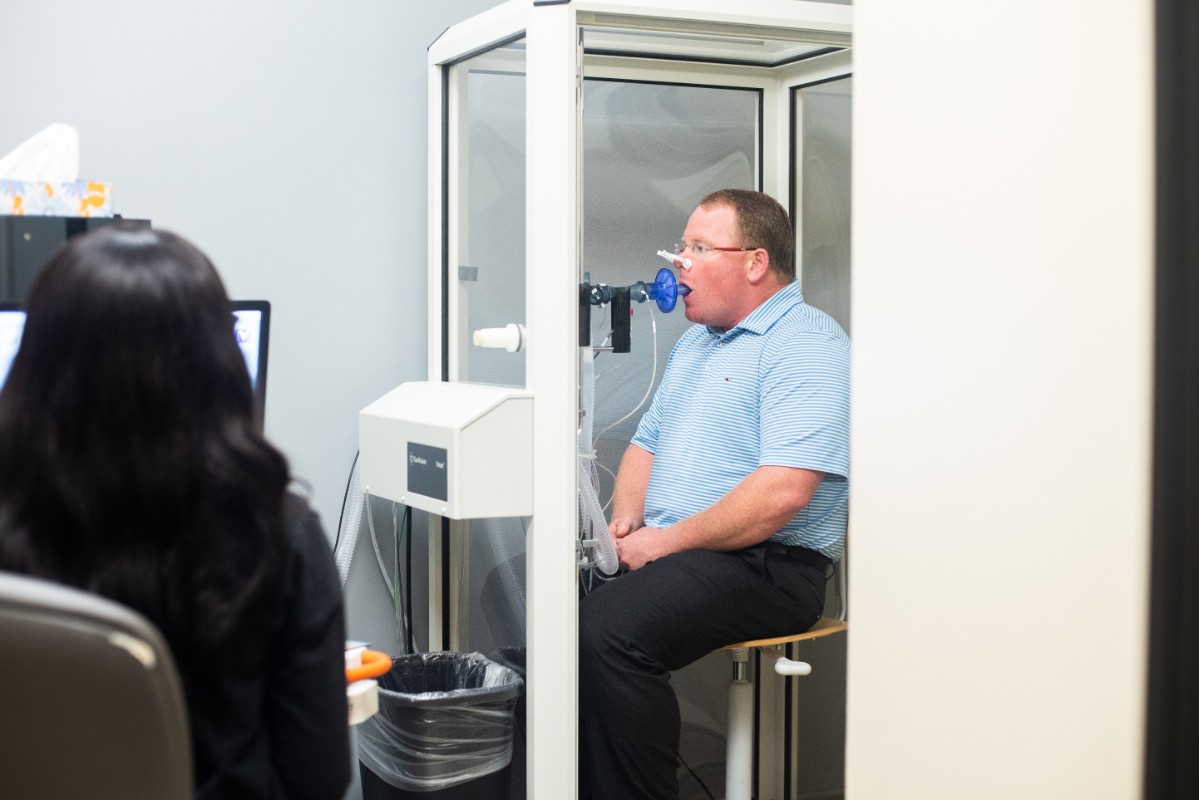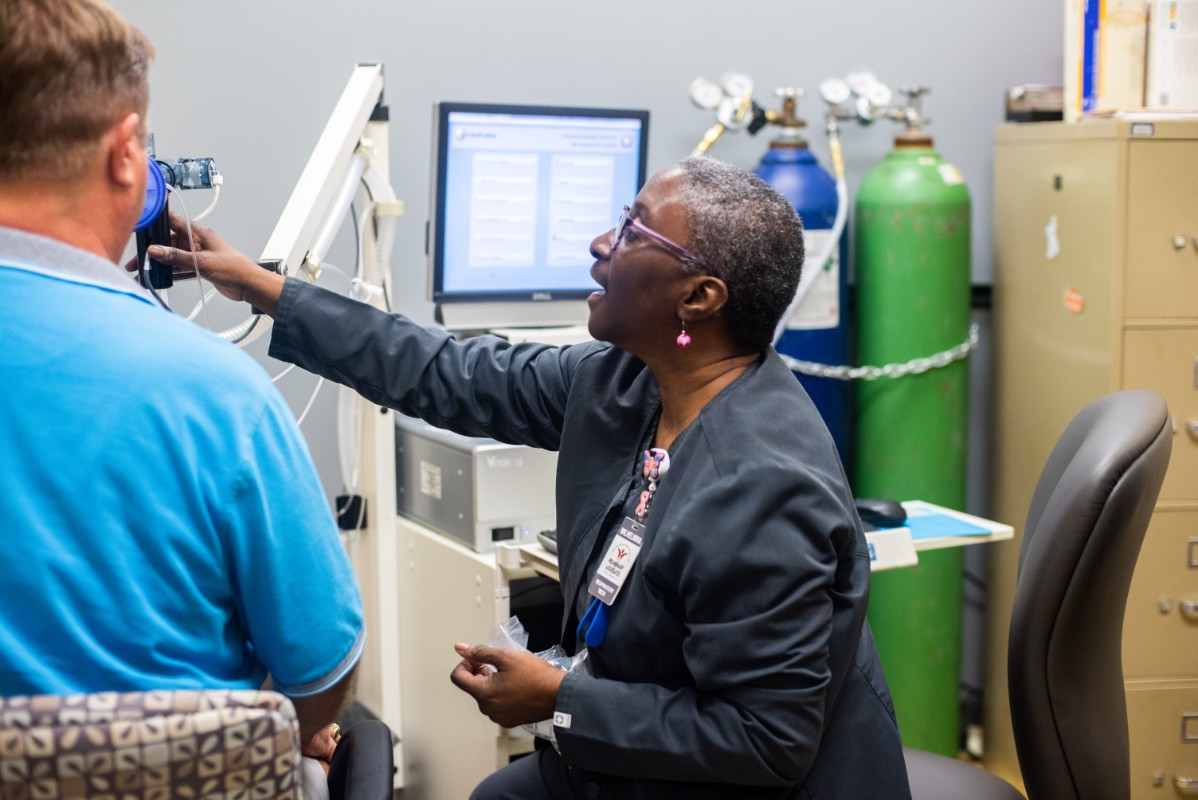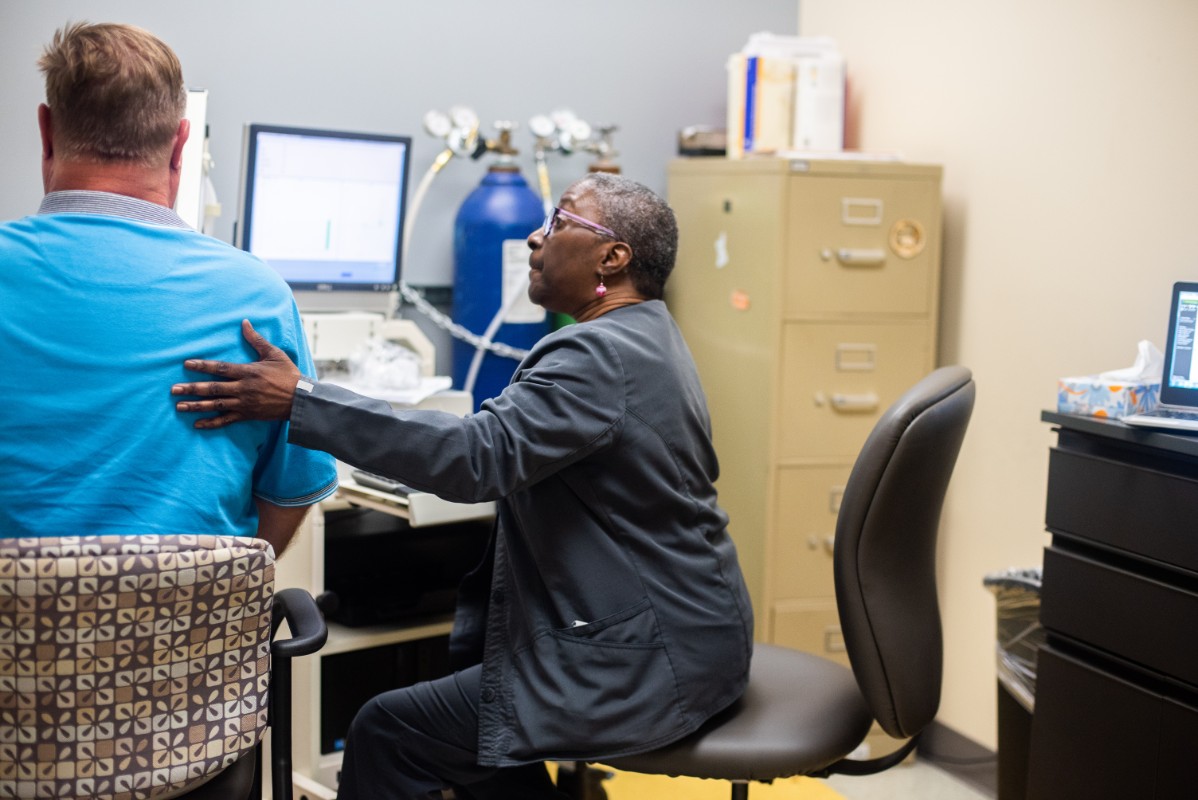Pulmonary Function Test
Pulmonary Associates of the Southeast PC employs Certified/Registered Respiratory Therapists to perform the pulmonary function tests (PFT). We perform simple spirometry to complete PFT.
Pulmonary Function Testing (PFT) is a procedure to determine lung function for the purpose of:
- Diagnosis of new lung disease
- Clearance for planned surgeries
- Assessing status of existing lung disease
- Assessing effects of medical treatment on lung function
A respiratory therapist administers the pulmonary function test, which is a series of breathing maneuvers performed by the patient while seated, or seated in a booth. After the initial tests are performed, a bronchodilator (inhaler) may be given, and some of the tests repeated to determine if there is improvement with the medication. The testing requires approximately one hour to complete.
Because a bronchodilator is given as part of the test, it is important for the patient to hold all breathing treatments and inhalers prior to the test. These include:
|
Medication |
Hold for: |
|
Albuterol, Atrovent, Combivent, Maxair, ProAir, Proventil, Ventolin, Xopenex |
4 hours |
|
Advair, Brovana Inhaled Solution, Foradil, Serevent, Symbicort |
12 hours |
|
Arcapta, Breo, Ellipta, Spiriva |
24 hours |
This may not be a complete list as new medications are introduced frequently. The rule of thumb is if you take the bronchodilator every 4 hours, hold for at least 4 hours, if you take it every 12 hours hold it for at least 12 hours, if you take it every 24 hours, hold it for at least 24 hours. When in doubt call the office 24 hours prior to the test to verify.
Bronchial provocation test (BPT) can be ordered following a normal pulmonary function test to assist in the assessment of asthma. An agent is inhaled in increasing doses with spirometry performed following each level following to determine a possible reaction. The test will be terminated if a reaction is noted.
Tests are normally performed prior to appointment with our physician. In some instances, the physician will order the test after the examination. It is important that the patient listen carefully to the instructions during the test. A clear diagnosis can best be determined with a ‘best effort’ from the patient.





